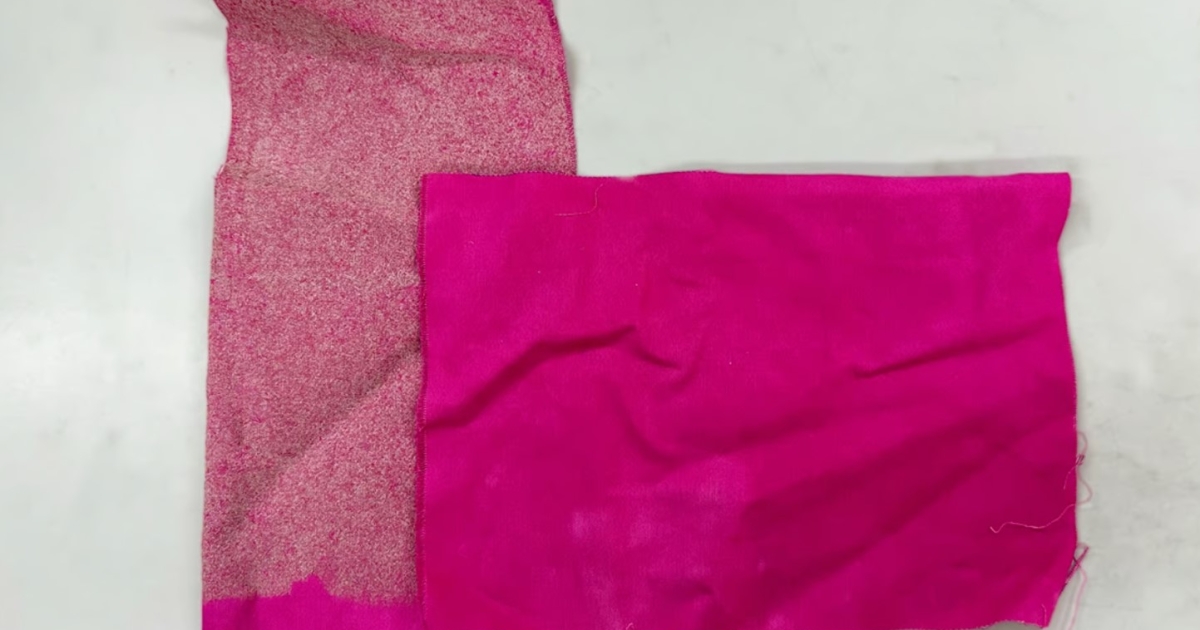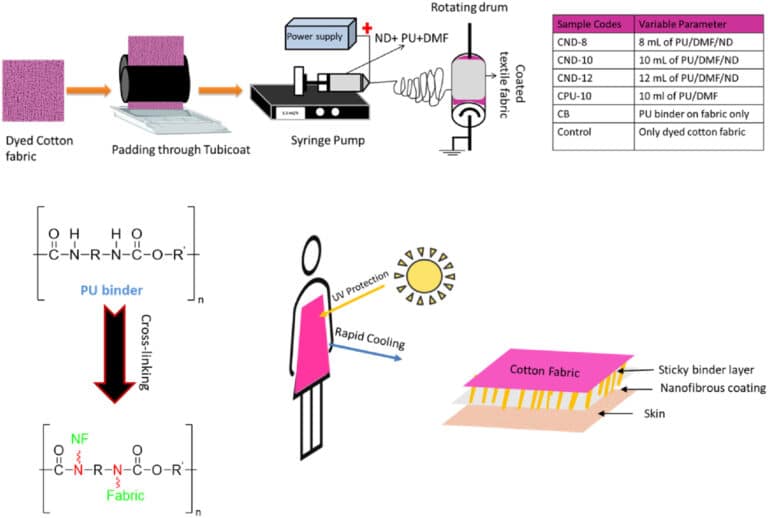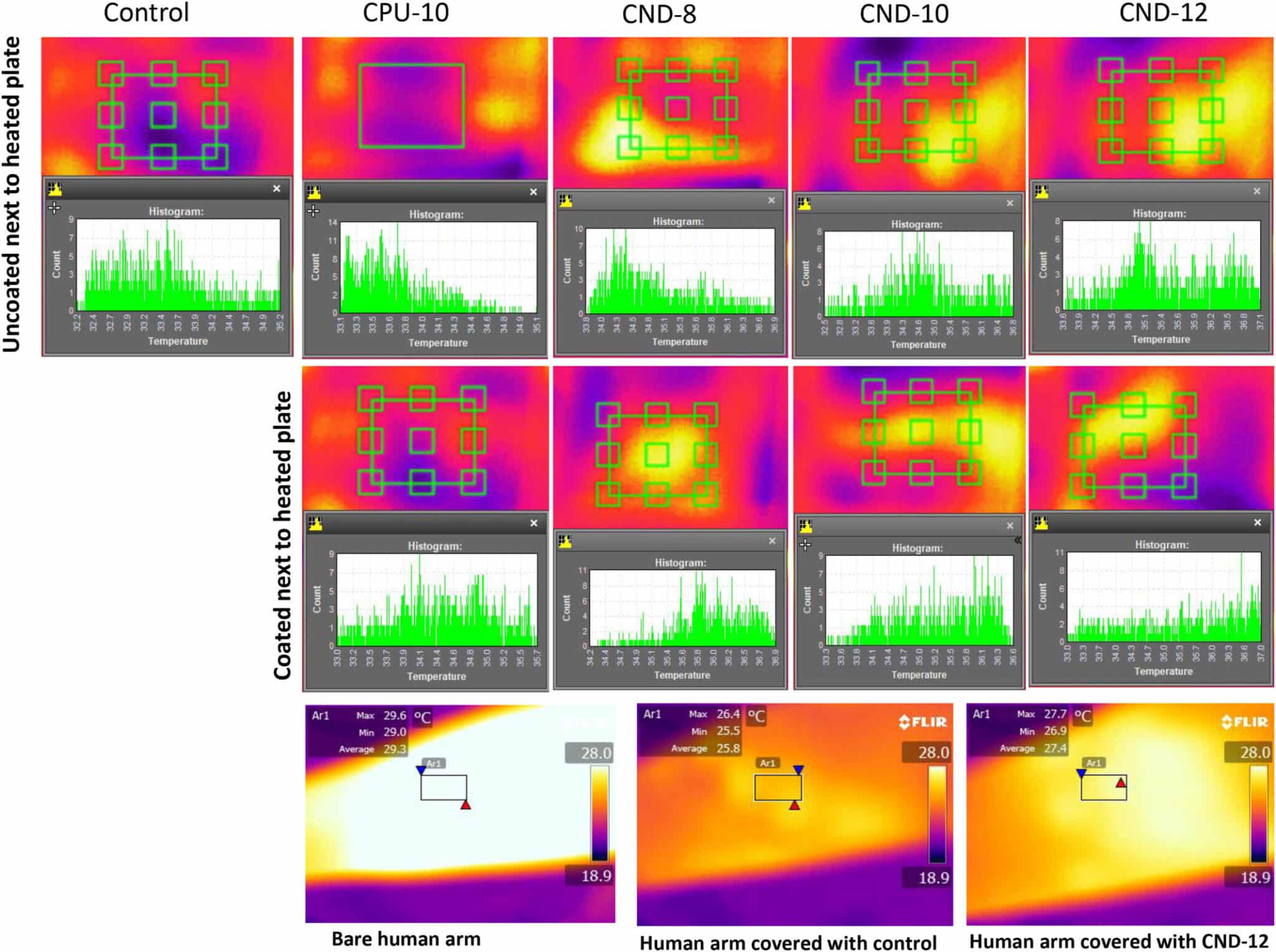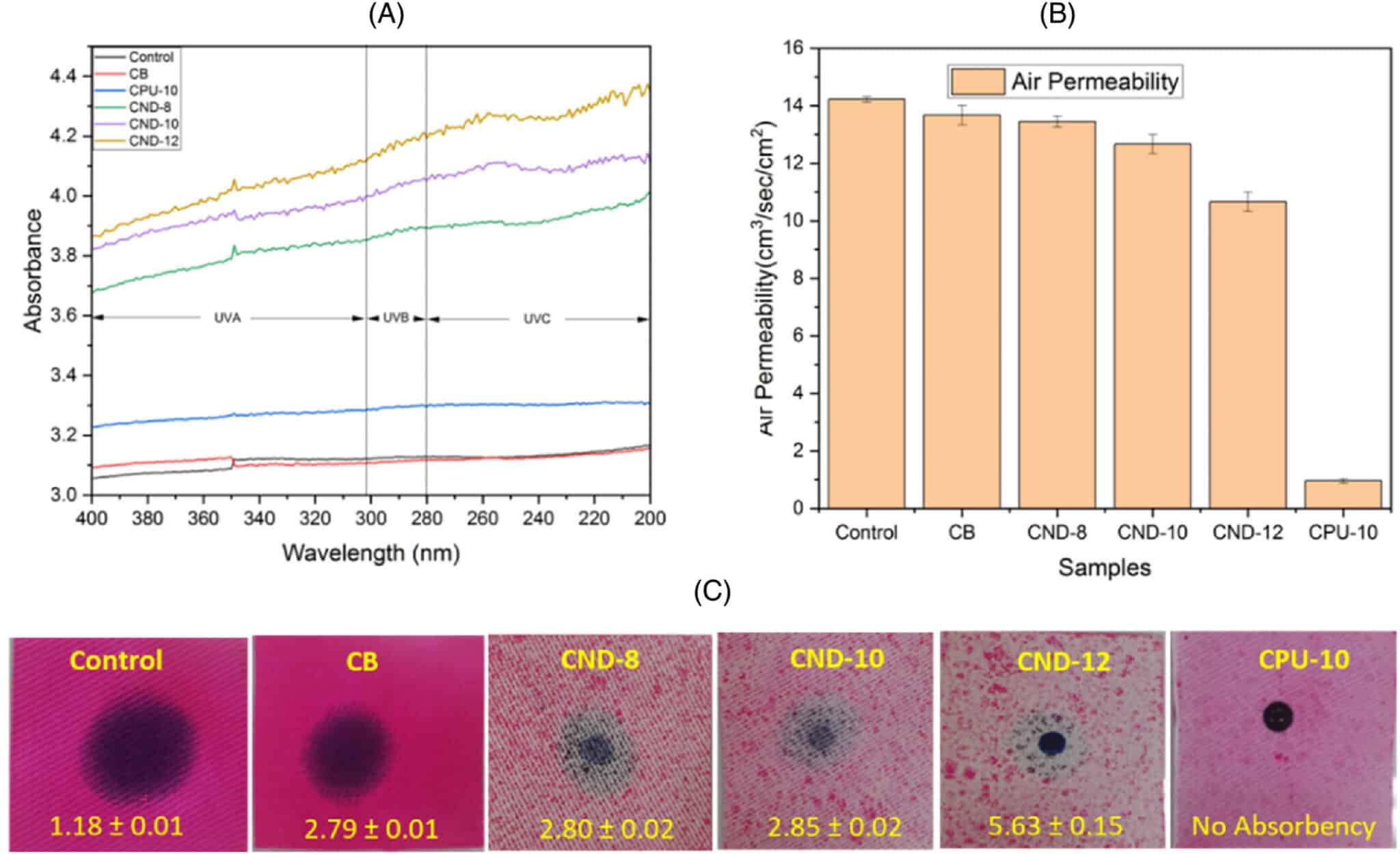
Scientists in Australia have created a revolutionary fabric with nanodiamonds that reduces body temperature
Due to the onset of global warming, experts are looking for ways to make people’s lives more comfortable. One of these areas is the improvement of individualized clothing.
Heat removal from the body can be organized in two ways: active and passive. But active involves bulky electrical devices for ventilation or liquid cooling. The passive method involves modifying the fabric, for example, using nanoporous polyethylene. However, there are other problems associated with this supplement: unpleasant sensations on the body and its coloring, difficulty in manufacturing, and design limitations.

Australian researchers have decided to create a lightweight and comfortable cooling fabric based on nanostructures with good thermal conductivity. Scientists chose nanodiamonds because they have previously shown effective heat dissipation on wool fabric and changed the approach to creating a composite material. The paper was published in the journal Polymers for Advanced Technologies.

The scientists used 100% cotton fabric as the basis, as it is environmentally friendly, comfortable and biocompatible. The nanodiamonds, measuring approximately 190 nanometers in size, were mixed with a polyurethane solution, which acted as a binder. The resulting polymer was applied to one side of the fabric by electrospinning to form nanofiber structures. According to the researchers, this method greatly simplifies the production of the material.
The heat transfer analysis was evaluated using infrared thermography: the samples were placed on a plate heated to 37 °C and observed for a minute. Then they were removed, allowed to cool to room temperature, and placed back on the hot surface, but on the other side.
It turned out that the treated samples heated up on the uncoated side more than the control samples – 34-34.5 °C versus 31.8-33.5 °C. This is due to the presence of a nanodiamond layer on the reverse side. The temperature difference, as explained by the experimenters, indicates that the fabric cools quickly if the coated side is located next to the skin.

Another experiment showed a similar result. A bare human hand with a temperature of 29 °C was covered with two tissue samples. The hand with the control material had a temperature of 25.5 °C, and the hand with the nanodiamond had a temperature of 26.9 °C. The authors concluded that the new coating removes heat to the atmosphere faster, and the cooling of the material itself is more intense than that of the control one. Experiments in sunlight showed the same results.
The researchers also tested the wear resistance of the fabric with nanodiamonds. The treated material absorbed ultraviolet light on average by 8-12% more than the control material. The air permeability of the fabric with the nanodiamond layer was lower, but only slightly, but they absorbed water much worse: one of the samples did not absorb anything at all, because the polyurethane layer created a film that does not allow moisture to penetrate the fabric. The better resistance to UV radiation in nanodiamond samples makes them attractive UV-protective agents, the authors of the scientific paper noted. However, in terms of comfort, wearing such a fabric can be problematic.
“Contrary to popular belief, nanodiamonds are not the same as diamonds that adorn jewelry. In fact, they are cheap to produce – cheaper than graphene oxide and other types of carbon materials. Although they have the structure of a carbon lattice, they are much smaller in size. They are also easy to make using detonation or from waste materials,” explained Shadi Houshiar, co-author of the study.

